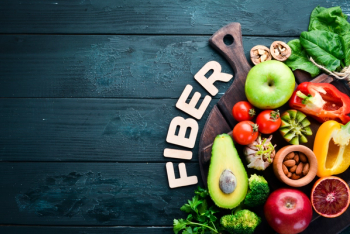
- Nutritional Outlook Vol. 17 No. 6
- Volume 17
- Issue 6
Coloring with Spirulina Blue
Industry has a new source of natural blue coloring, but what are this colorant’s limits?
For centuries, humans have consumed spirulina (Arthrospira platensis) for its great concentration of vitamins, minerals, protein, and chlorophyll. It’s been a primary component of diets in Mexico and Chad, and consumers worldwide still buy spirulina today as tablets and powders. But, for all of spirulina’s popular use, U.S. manufacturers have never been allowed to use this blue-green bacterium as a coloring agent-until now.
Thanks to a few persistent ingredient suppliers who filed petitions, spirulina is now an FDA-approved colorant. Yet, while spirulina coloring is getting lots of approved uses, the ingredient is not without its limits. Before manufacturers switch from artificial blues to this natural one, a basic understanding of spirulina can be helpful.
Taste and Application
Sourced from open-air ponds, spirulina is known as much for its fish-tank odor and flavor as for its nutrition. But the small amount of spirulina that is required to impart color in food products shouldn’t be enough to disturb the senses. Many spirulina coloring agents are sourced from extracts anyway, and suppliers say these extracts undergo enough processing to overcome the smell or taste that would be present in the raw material.
Spirulina extract is approved for many food product categories. Last summer, FDA approved the material as a coloring source for candies and chewing gums. Just months ago, the agency extended that permit to frostings, ice cream and frozen desserts, dessert coatings and toppings, beverage mixes and powders, yogurts, puddings, custards, cottage cheese, gelatin, breadcrumbs, and ready-to-eat (but not extruded) cereals.
On the dietary supplement side, spirulina is useful as a nutraceutical ingredient. Its usual color is dark green, but Valensa International (Eustis, FL) has taken an extra step in developing a spirulina ingredient that is highly concentrated in spirulina’s blue pigment. It’s this blue that is the basis for spirulina’s approved use for coloring.
Color Range
The primary pigment in spirulina is a protein called phycocyanin. It imparts a cyan, or vibrant blue, color. Manufacturers will most often see spirulina coloring extract in this shade, but that’s not to say that spirulina blue can’t be the foundation for other colors.
“You can mix it with yellow to get green, but you can also mix it with red to get these lavender or violet shades,” says Jeanette O’Brien, vice president of GNT USA Inc. (Tarrytown, NY). “They’re different shades of purple than what you would get from other fruits or vegetables.”
Stability
Even though spirulina opens up a new world of natural color, the ingredient isn’t destined to perform well in every product. It has its limits, as all natural colorants do.
Spirulina is usually not stable in beverages, either because of beverage acidity or because spirulina will simply settle to the bottom of liquid products. (Beverage powders, on the other hand, are a viable alternative.) Spirulina does not hold up in high heat conditions, and for this reason extruded cereals are also out of the question. Dairy products, while included on the permissions list, could be tricky.
“With yogurt and dairy products, you may have to be careful and watch out for any interactions that may occur,” says Chad Ford, associate director of the colors division for WILD Flavors Inc. (Erlanger, KY). “There’s a lot of protein that’s already in spirulina itself, so you’d want to watch for any interactions with active cultures from yogurt.”
Conditions that work well for spirulina coloring are alkaline or neutral in pH. Products that are fixed in form, like non-extruded cereals and gelatin, should keep the coloring in place and prevent it from migrating through to different parts of a product. For spirulina’s handful of challenges, a lot of opportunities still exist, and if blue coloring is desired, this brilliant new blue is worth your consideration.
Photo courtesy of GNT USA.
Articles in this issue
over 11 years ago
Soft Drinks Responsible for One-Fifth of Stevia Marketover 11 years ago
Equipment for Controlling Food Contaminationover 11 years ago
Four Botanicals to Watchover 11 years ago
Advice for the Next Head of FDA’s Division of Dietary Supplementsover 11 years ago
Protein Products Vulnerable to Amino Acid Spikingover 11 years ago
Biggest Mistake Drug, Supplement Researchers Make: Ignoring Womenover 11 years ago
Fermentation-Derived Stevia Getting Closer to MarketNewsletter
From ingredient science to consumer trends, get the intel you need to stay competitive in the nutrition space—subscribe now to Nutritional Outlook.





